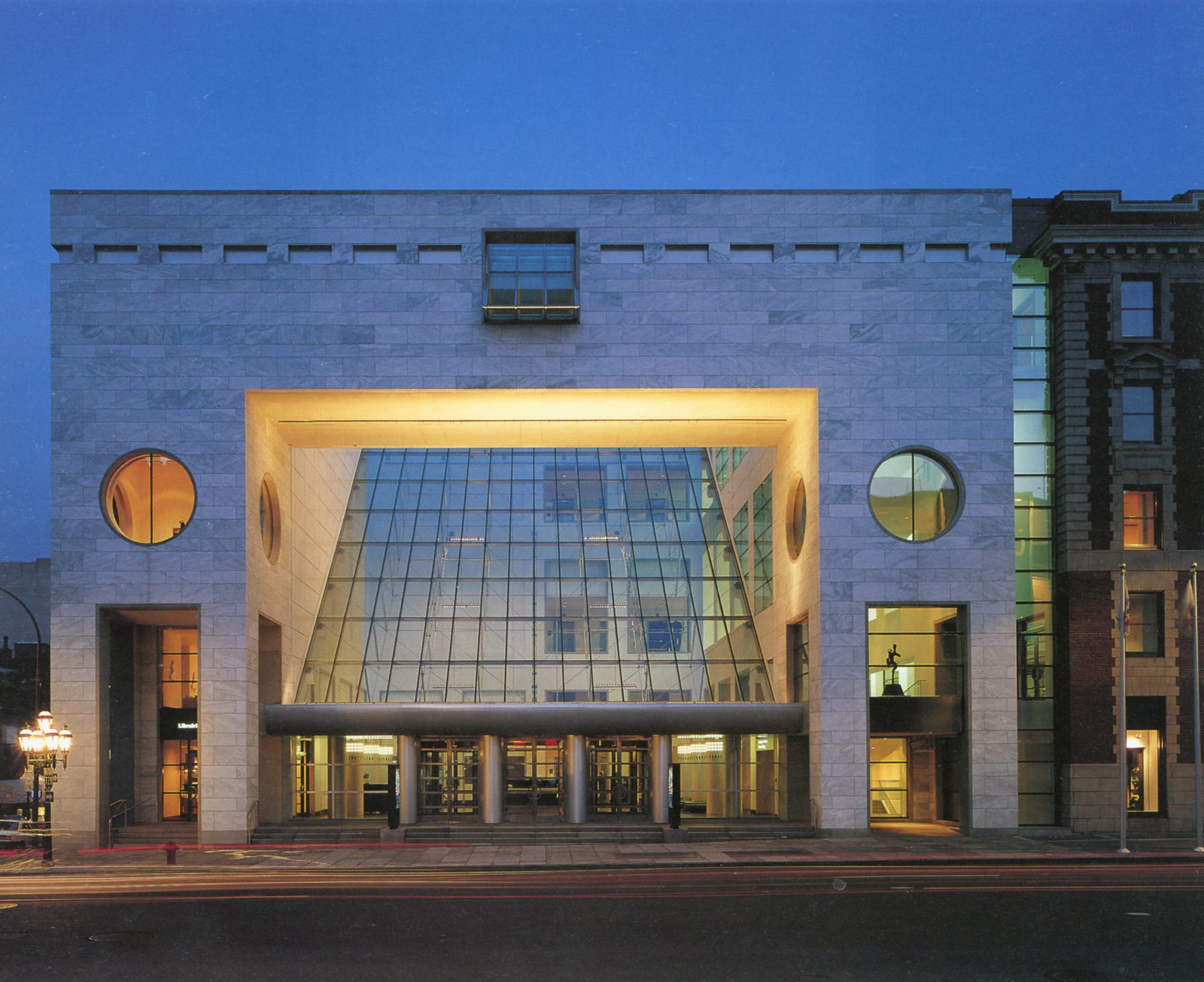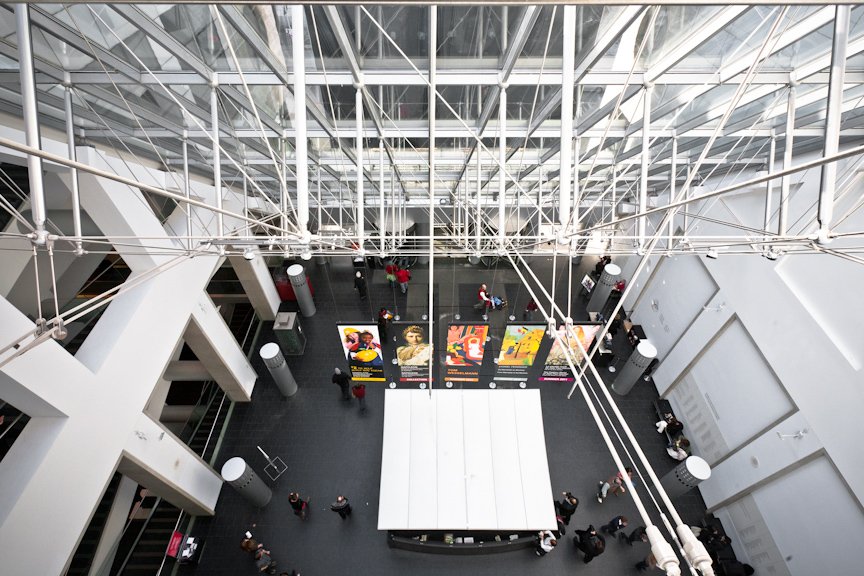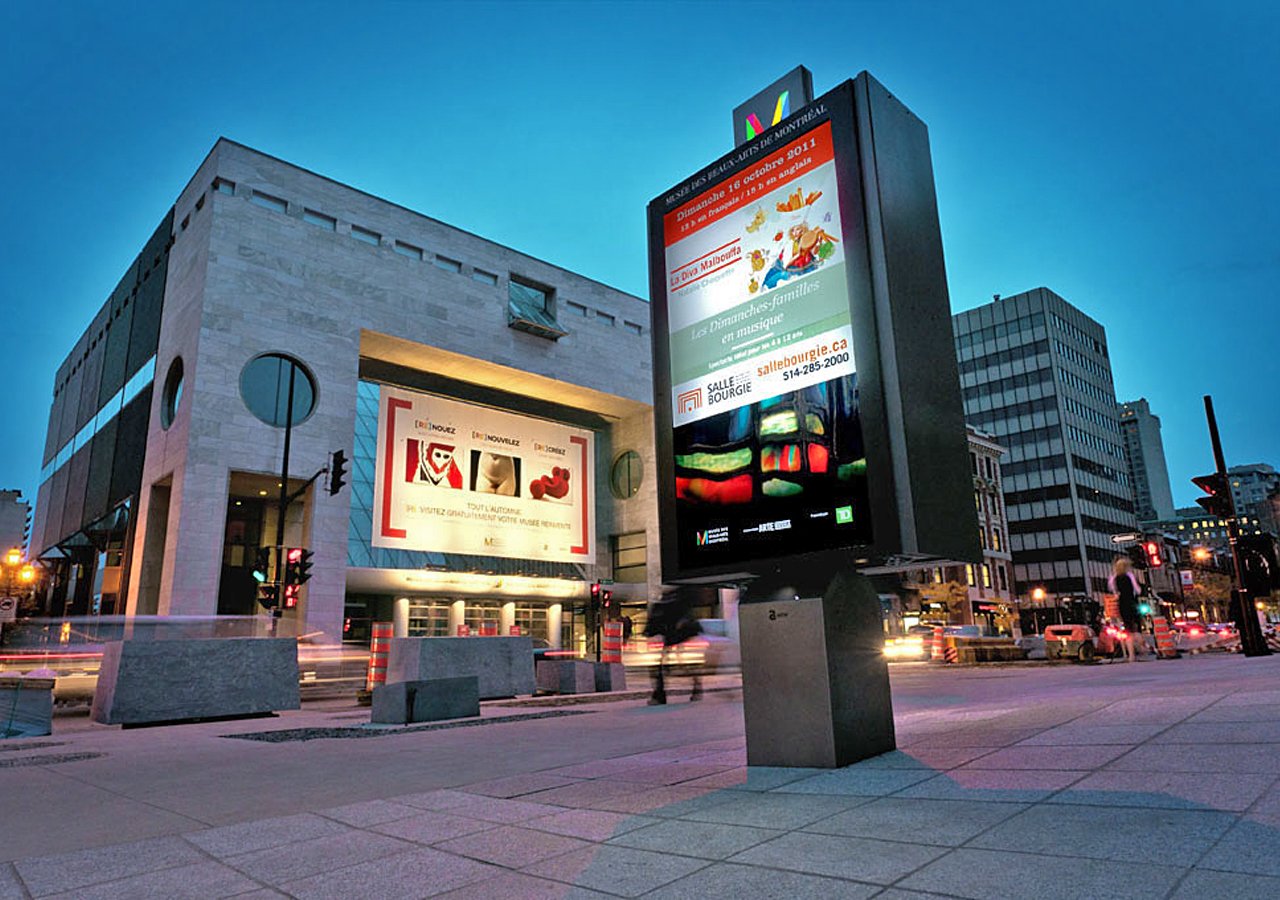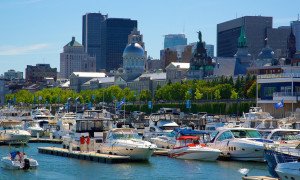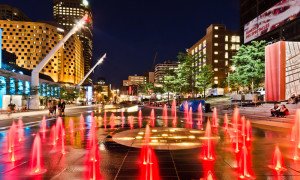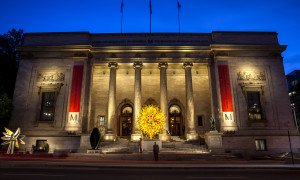The Montreal Museum of Fine Arts (French: Musée des beaux-arts de Montréal) is Canada’s most popular arts museum with over a million visitors annually. It is Montreal’s largest museum and is amongst the most prominent museums in Canada. The museum offers education, cultural and community programs. It is often known as the MMFA for short.
Visitors can enjoy the museum’s extensive collection and its temporary shows, which combine artistic disciplines (fine arts, music, film, fashion, design) and feature innovative exhibition design. Started in 1860 by a group of wealthy art-lovers from Montreal, the MMFA provides a comprehensive collection and unique temporary exhibitions. Visit the international contemporary galleries for insight into the artistic trends of today, from multimedia projects to abstract painting and a range of innovative sculptural practices. Move through the Bourgie Pavilion to explore the history of Quebec and Canada. See thousands of pieces of art along with a collection of Inuit works and Amerindian artifacts.
The museum sprawls over five separate pavilions, with more than 40,000 different objects in its collections. The Claire and Marc Bourgie Pavilion is devoted to Quebec and Canadian art with a large collection of Inuit art. It also houses the Bourgie Concert Hall, a 444-seat venue. The Jean-Noël-Desmarais Pavilion houses international works of medieval to modern art from around the world, with a large selection of European art from famous artists such as Monet, Cézanne, Renoir, Picasso, Matisse and Dali. The Michal and Renata Hornstein Pavilion focuses on archaeology and ancient art from regions around the world. The Liliane and David M. Stewart Pavilion is dedicated to decorative arts and design. It was first added in 1917 and recently expanded to include decorative arts from all over the world. A new pavilion devoted to educational and community activities is slated for completion in 2017.
Over the past 150 years, the museum has assembled one of North America’s finest encyclopedic collections, totaling over 33 000 objects, from antiquity till now, most of them prestigious donations from the great families of Montréal. The collection includes Decorative Arts, Canadian Art and Inuit Art, International Art, Prints and Drawings, Old Master Paintings, and Modern and Contemporary Art, as well as important collections of ancient textiles and English porcelain, and the world’s largest collection of Japanese incense boxes.
The museum presents important temporary exhibitions all year long. Various lectures, films and concerts take place in the auditorium in connection with the exhibitions. Guided tours are offered to the public. In 2009, music was introduced as an integral part of the museum’s programs, providing another perspective on the visual arts through musical audioguides and other innovative activities. These are organized in co-operation with the new Arte Musica Foundation.
For visitors requiring special accessibility needs, all pavilions are equipped with access ramps for wheelchairs. You can move around without any problems through the exhibits of the Museum. Access for guide dogs is allowed in public areas and showrooms. Wheelchairs are available to the visitors at the cloakroom of the lobby. There are also two parking meters reserved for “disabled” permit holders in front of the main entrance at 1380 Sherbrooke Street West.
The Montreal Museum of Fine Arts is open every day but Monday. Tickets can be bought at the door or in advance online. It is located in the “Golden Square Mile” in downtown Montreal.
